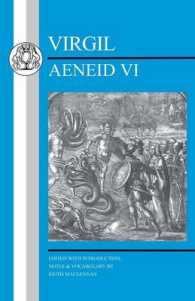- ホーム
- > 洋書
- > 英文書
- > Business / Economics
Full Description
With the rising importance of knowledge as a primary factor in global industries, it is increasingly necessary for knowledge management professionals to understand, engage with, and speak the language of assets, investments and auditing. However, all too often, professionals don't have these skills, and have no way to learn them.
This exciting guide helps knowledge management professionals gain a basic understanding of assets, investments and audits, so they can command respect from those who are in control of financial investments. It also ensures that organizations have a roadmap for developing short- and long-term investment strategies. Providing guidance for identifying assets - and liabilities - as well as describing the types of investment available to align with knowledge assets, expert authors Pawan Handa, Jean Pagani, and Denise Bedford walk readers through standard audit practices, and help you through the process of designing, conducting, and reporting on the results of a knowledge audit.
For knowledge management professionals, corporate and business leaders and managers, workforce professionals, and educators, this is an unmissable guide that unites the new face of the global economy with accepted auditing practices.
Contents
Part I: Knowledge Audits - Models and Methods 1. Audits - What To Audit And Why
2. Audit Methodology For Business Processes
3. Audit Methodology For Knowledge Functions
4. Designing an Audit Of Knowledge Assets
Part II: Defining and Identifying your Knowledge Assets
5. Identifying and Categorizing Organization's Knowledge Assets
6. Identifying Sources and Ownership of Knowledge Capital Assets
7. Define the Useful Business Life of Knowledge Assets
Part III: Managing Knowledge Assets
8. Business Transformation of Knowledge
9. Current Management of Knowledge Assets
10. Managing Risks of Knowledge Assets
11. Define Investment Strategies for Knowledge Assets
Part IV: Accounting for Knowledge Assets
12. Assigning Value to Knowledge Assets
13. Defining the Costs of Knowledge Assets
14. Defining the Revenue and Profit Generated by Knowledge Assets








